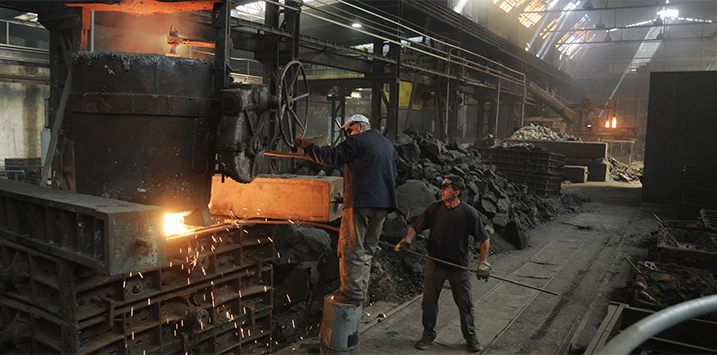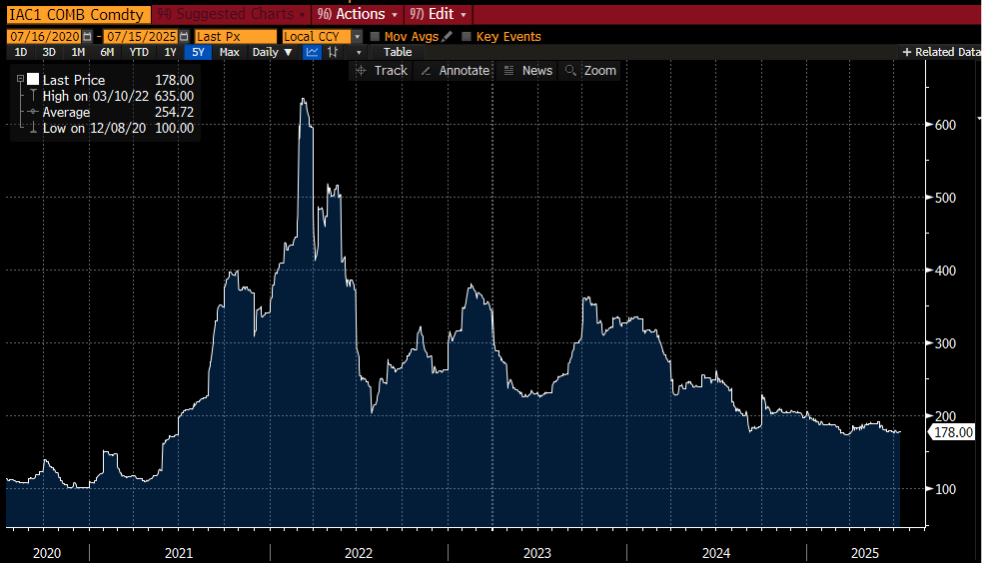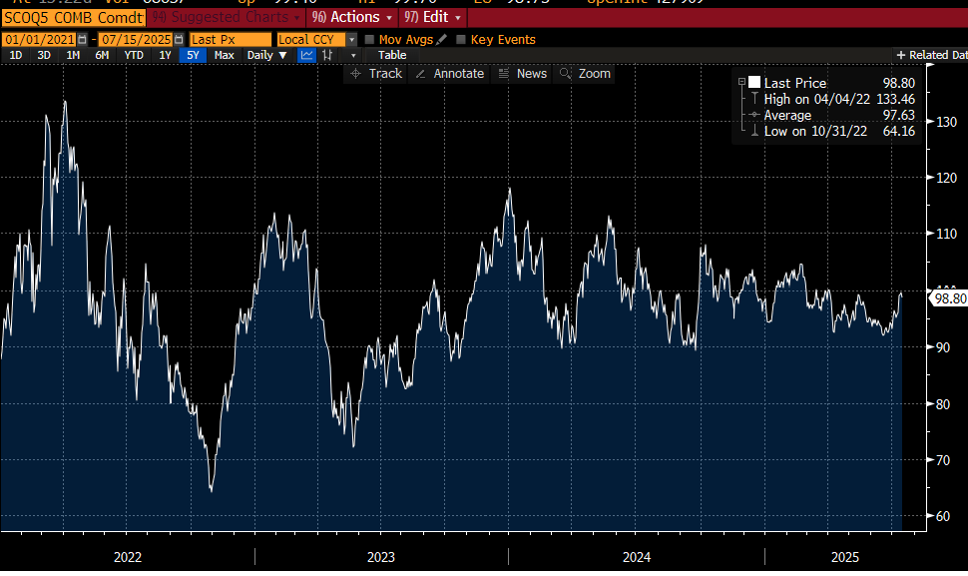
How is it the iron-ore price remains so resilient?
Metallurgical or coking coal, a major input in steelmaking, has seen its price decline from US$670/tonne to the current US$183/tonne over the past three years. A global oversupply of steel, low steel prices and uncertainty regarding global trade has led to muted demand.
This deterioration is highlighted in the share price movement of many operationally and financially leveraged companies including Coronado Global Resources (ASX:CRN), which has seen its share price decline by 94 per cent from $2.50 to the current $0.15, and giving it a market capitalization of A$259 million.
For context, Coronado Global Resources sells around 15 million tonnes of coal per annum, broken down into approximately 80 per cent Metallurgical Coal and 20 per cent Thermal Coal. Calendar 2024 revenue hit US$2.5 billion.
The issue, however, is Coronado Global Resources has around US$1.4 billion of non-current financial obligations and this includes US$400 million 9.25 per cent senior secured notes maturing in 2029. Other liabilities at the 31 December 2024 balance date includes US$285 million of deferred consideration; US$165 million of asset retirement liabilities; US$94 million of lease liabilities; and US$43 million of contract obligations.
In short, according to the information we have today, Coronado Global Resources may require a capital infusion approaching A$1 billion, or around four times its current market capitalization. A strong rally in the price of metallurgical coal price, severe cost cutting, or the potential sale of a minority interest in the Curragh coal complex could all go some way in relieving this situation.
Given the 73 per cent fall in the metallurgical coal price since 2022, an important question is how has the price of iron-ore managed to meander around US$100/tonne over the past couple of years?
Metallurgical coal price

Source: Bloomberg
Iron ore price

Source: Bloomberg
For context, Australia (900 million tonnes) and Brazil (400 million tonnes) account for over 75 per cent of global iron-ore exports. Canada and South Africa, together, account for over 8 per cent of global iron-ore exports.
The Republic of Guinea’s Simandou 2.8 billion high grade iron-ore deposit is expected to be operational by late-2025 and is budgeted to reach production capacity of 120 million tonnes per annum by 2029, adding around 6.5 per cent to global iron-ore exports. With pressure on China’s domestic steel production, which accounts for around 54 per cent of global steel production, the Australian Treasury anticipates the iron-ore price will dip to US$77/tonne over the 2025/26 financial year.